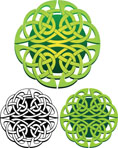“What, to you, are the typical stages or phases — if any — of a normal human lifetime, whether or not they are typical of yours?”
When you review your response to this week’s prompt (above), what is your “go to” Life Course Schema—Is it mainly Linear, Cyclic, or Seamless? More importantly, in what ways might this model influence your perception of life events or your decisions and behavior, either with regard to your own life, or others? Allow me to share a few stories from some life mappers today.
When I began studying Life Paths by conducting interview research, I placed an ad in a local paper that simply stated: “Mid-life Crisis?” followed by my contact information. I interviewed eleven people who responded to that ad. Each of them expressed a LINEAR Life Course Schema. John, for example, had lost a series of jobs to downsizing in the airline industry. He felt debilitated because he had trained for that career and felt, in his early 40’s, that his career was a failure. This is so common that people who believe in a LINEAR stage model of life may have difficulty dealing with change, which may feel like a disruption of the one-education, one-career, one-relationship life progression they hope or might have grown up expecting to maintain. That is why a LINEAR model is less appropriate or a bit dicey, at least, in today’s world of flux. We need a flexible model that allows for change and adaptation.
I found in my interviews that people who had experienced an early family disruption like their parents’ divorce or a natural disaster often adapted by developing a CYCLIC Life Course Schema instead of a LINEAR one. Sandi, for example, who has been a globe trotter most of her adventuresome life, said she feels she has been living several lifetimes in this one; and she means that literally, as she holds a strong belief in reincarnation. Hers is a CYCLIC adaptation that allows for a great deal of creativity and flexibility.
Then there was Esther, also a person who has lived in several countries in her life. Her big move from a Nordic country as a child to the US for an athletic opportunity and then to marry and raise her family in the US was possible because her philosophy of life—her SEAMLESS Life Course Schema—allowed her to take major leaps when the opportunities arose. Esther described life as like a chain with links that form unpredictably; they fit together in retrospect but until a new experience ‘happens,’ you won’t really know what is around the bend, and this is good. Esther eschews setting goals; she much prefers to welcome change and the rich opportunities they manifest in her life.
One note: You might find that you hold one Life Course Schema with respect to one ‘angle’ of your life experience and another for a different dimension of your life. You might then be able to “borrow” from one side (read, archetypal orientation or role perspective) to aid another side of you to help make a decision or deal with a change. Please put this idea on the back burner for now; it will resurface when we talk in two weeks about your recurring Life Themes, and then later, when I invite you to Meet & Greet your own ‘ensemble cast of mythic archetypal characters”!
I welcome all of your insights and stories!
(Dear fellow bloggers, Tweeters and readers: I am traveling for the next 18 days. I will continue to put up posts but it might take longer than usual to respond to your cherished and welcome comments. – Linda)






